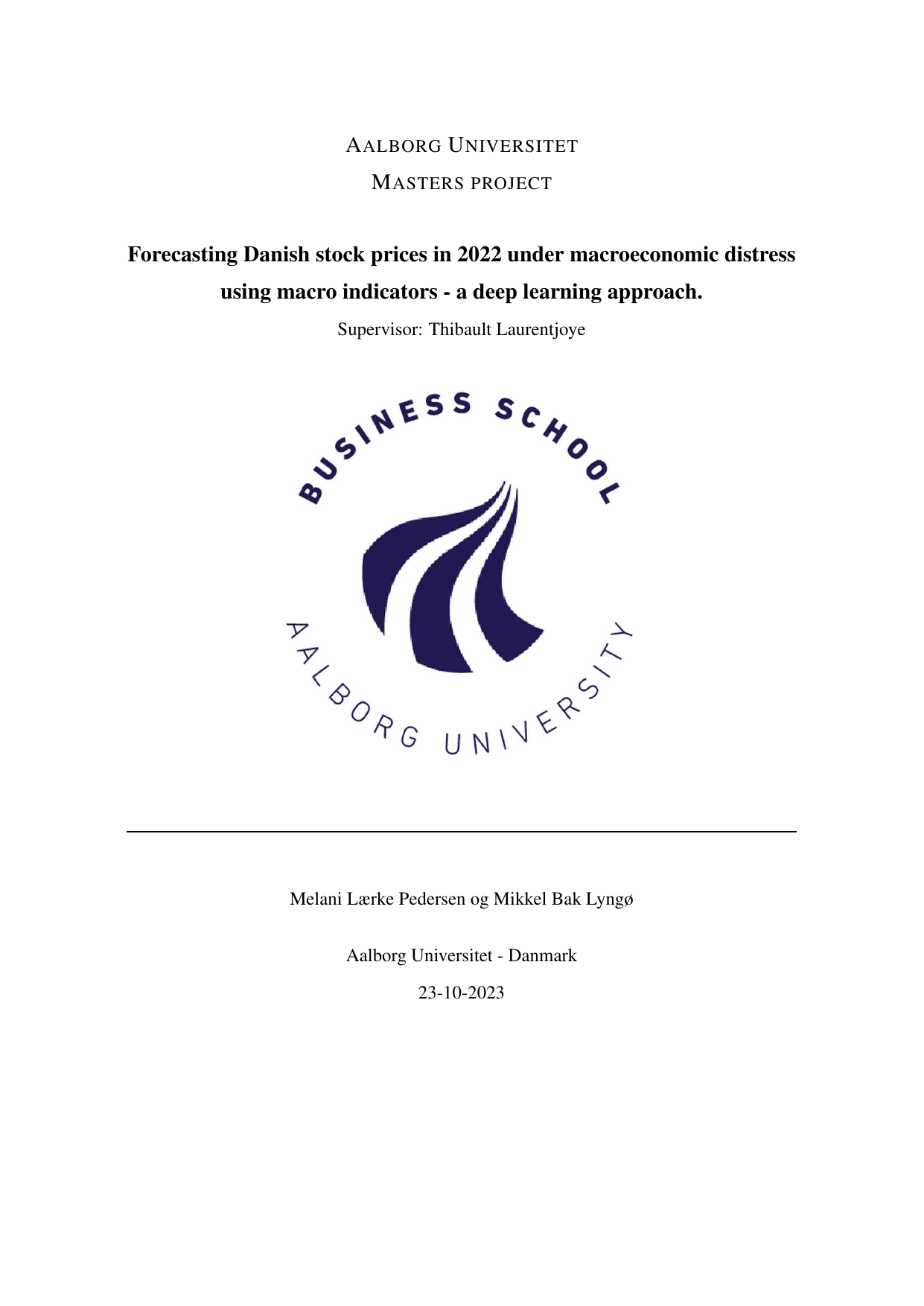
Forecasting Danish stock prices in 2022 under macroeconomic distress using macro indicators - a deep learning approach
Authors
Term
4. term
Education
Publication year
2023
Submitted on
2023-10-23
Pages
78
Abstract
This study delves into the unpredictable nature of the stock market, acknowledging the challenges posed by its volatility and instability. Numerous theories exist on forecasting stock prices, yet no universal explanation fits all scenarios due to the diverse nature of stocks. This research takes a novel approach by employing LSTM models, to predict stock prices. It examines whether incorporating external macroeconomic factors into LSTM could improve forecasting accuracy. This analysis specifically focuses on a period marked by macroeconomic distress in autumn 2022. The study explores the optimization of LSTM and LSTM-X models to effectively handle volatility in the data being forecasted. Despite the findings indicating that both LSTM and LSTM-X models did not fully meet their potential, valuable insights were gained. Discussions and arguments presented in this study propose potential adjustments for future forecast models, aiming to simplify the handling of volatility and optimize forecasting accuracy.
This study delves into the unpredictable nature of the stock market, acknowledging the challenges posed by its volatility and instability. Numerous theories exist on forecasting stock prices, yet no universal explanation fits all scenarios due to the diverse nature of stocks. This research takes a novel approach by employing LSTM models, to predict stock prices. It examines whether incorporating external macroeconomic factors into LSTM could improve forecasting accuracy. This analysis specifically focuses on a period marked by macroeconomic distress in autumn 2022. The study explores the optimization of LSTM and LSTM-X models to effectively handle volatility in the data being forecasted. Despite the findings indicating that both LSTM and LSTM-X models did not fully meet their potential, valuable insights were gained. Discussions and arguments presented in this study propose potential adjustments for future forecast models, aiming to simplify the handling of volatility and optimize forecasting accuracy.
Documents
